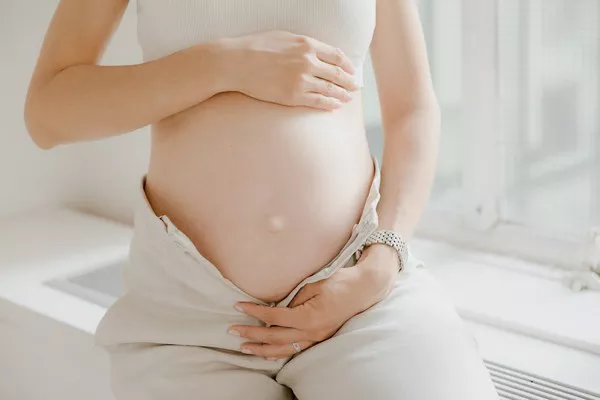Ultrasound technology has revolutionized prenatal care by providing expectant parents with valuable insights into the development of their unborn child or children. Detecting twins during early pregnancy is an exciting revelation for many families, but can it be done as early as six weeks into gestation? In this article, we will explore the capabilities of ultrasound in identifying twins at such an early stage of pregnancy, the factors that influence twin detection, and what to expect during your ultrasound appointment.
The Role of Ultrasound in Prenatal Care
Ultrasound, also known as sonography, is a non-invasive medical imaging technique that utilizes sound waves to create real-time images of the inside of the body. In the context of prenatal care, ultrasound is a valuable tool for assessing the health and development of the fetus or fetuses, monitoring the progress of the pregnancy, and, of course, determining the number of fetuses present.
The 6-Week Milestone
At six weeks of pregnancy, a woman is often still in the early stages of her first trimester. During this time, the fetus is rapidly developing, with key structures taking shape. Detecting twins at this stage is possible, but it’s essential to understand that the likelihood of successful identification depends on several factors.
Factors Influencing Twin Detection at 6 Weeks
Gestational Age: The accuracy of twin detection depends on the gestational age. At six weeks, the developing embryos are still relatively small, making them more challenging to identify.
Position of Embryos: The position of the embryos within the uterus can affect detection. If the embryos are close together or positioned in a way that makes them less visible, it can be more challenging to confirm the presence of twins.
Ultrasound Equipment: The quality of the ultrasound equipment and the experience of the sonographer or healthcare provider conducting the scan play a crucial role in early twin detection. High-resolution ultrasound machines and skilled professionals enhance the chances of success.
Transvaginal vs. Abdominal Ultrasound: In early pregnancy, a transvaginal ultrasound, where the probe is inserted into the vagina, may provide clearer images and higher chances of detecting twins compared to an abdominal ultrasound.
Personal Factors: The woman’s body type, the presence of uterine fibroids, and other individual characteristics can impact the visibility of the embryos.
What to Expect During an Early Pregnancy Ultrasound
When you visit your healthcare provider for an early pregnancy ultrasound, you can expect the following:
Transducer Placement: For a transvaginal ultrasound, you will be asked to empty your bladder. Then, a lubricated transducer will be inserted into your vagina. This process may be mildly uncomfortable but is generally well-tolerated.
Visual Confirmation: The ultrasound technician or healthcare provider will move the transducer to visualize the uterus and any embryos present. They will be looking for a gestational sac or sacs, yolk sacs, and, if possible, fetal poles with heartbeats.
Measurements: The size of the gestational sac and the embryos will be measured to estimate gestational age and ensure appropriate development.
Heartbeat: If the embryos are far enough along, the ultrasound may reveal heartbeats. This is a significant milestone in confirming a healthy pregnancy.
Number of Embryos: If twins are present, the ultrasound will typically show two separate gestational sacs, each containing an embryo. In some cases, a skilled sonographer may even be able to detect two distinct heartbeats.
Challenges in Twin Detection
While it’s theoretically possible to detect twins at six weeks, it’s important to recognize that not all twin pregnancies will be identified this early. Factors such as embryo size, positioning, and the quality of the ultrasound equipment can limit the ability to detect twins conclusively.
If twins are not identified during the initial 6-week ultrasound, it doesn’t necessarily mean they aren’t present. Many women receive follow-up ultrasounds at around 10 to 12 weeks, which may offer a clearer view of the developing fetuses and a higher likelihood of identifying twins.
Advantages of Early Twin Detection
Detecting twins early in pregnancy offers several advantages:
Early Prenatal Care: Knowing you’re carrying twins allows for specialized prenatal care tailored to the unique needs of a multiple pregnancy.
Emotional Preparation: Parents can emotionally prepare for the arrival of twins, which may include making practical arrangements and seeking support from family and friends.
Reduced Anxiety: For many expectant parents, the uncertainty of not knowing if they’re having twins can be stressful. Early detection can alleviate this anxiety.
Monitoring for Complications: Identifying twins early enables healthcare providers to monitor for potential complications, such as twin-to-twin transfusion syndrome.
In Conclusion
While it’s possible to detect twins at six weeks of pregnancy using ultrasound, it’s not guaranteed. The success of twin identification depends on various factors, including gestational age, positioning of the embryos, ultrasound equipment, and the skill of the healthcare provider conducting the scan. If twins are not identified early, follow-up ultrasounds at a later stage of pregnancy can provide additional opportunities for confirmation. Whether you’re expecting one or two babies, early prenatal care and regular ultrasounds are essential for a healthy and well-monitored pregnancy.


